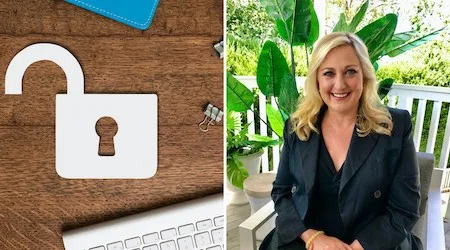How do we encourage more women in STEM?

Tech entrepreneur Robyn Foyster looks at the value of encouraging women to explore STEM fields – and some of the ways we can unlock more opportunities for them.
As the publisher of Women Love Tech and a founder of my own tech company Sweep, I meet lots of incredible women in STEM (Science, Technology, Engineering and Mathematics). And it always disappoints me that there are so few of them.
Multiple reports indicate that women hold less than 10% of technology jobs in Australia.
Female tech entrepreneurs, like myself, are outnumbered by our male counterparts at a rate of about four to one. Yet there is plenty of research that proves more diverse workforces perform better financially.
McKinsey's groundbreaking Diversity Matters report makes the point: it's clear companies need to do more to take advantage of the opportunity diverse leadership teams represent and to pay more attention to attracting, developing and retaining the next generation of leaders.
What is also clear is encouraging more women in STEM needs to happen earlier in women's lives. In fact, it needs to start in the playpen and we need to stop implicit biases that kids in Australia grow up with.
Looking back at my own experience at school, it's amazing I ever got into technology at all. All the girls at our school were told by the headmistress we'd make excellent nurses or teachers. What we needed to be told is that we could achieve anything we aspire to – and that technology is exciting and offers a wealth of opportunity.
We also need role models to inspire us that all things are possible.
National Broadband Network (NBN Co) CIO Debbie Taylor is a woman I admire tremendously. She has risen through the ranks of a male-dominated industry and overcome many obstacles to reach the top of her game.
Debbie is also actively involved in programs such as Code Like A Girl – a social enterprise providing women with the confidence, tools, knowledge and support to enter, and flourish, in the world of coding. It also has a partnership with NBN Co.
"I think that we need to change the way girls think from a very, very early age," Debbie told me.
"At Code Like A Girl, 8- to 12-year-olds attend camps where they learn to code. They have a really great time and we teach them about how exciting tech can be.
"We also have a program called the 'Stempreneur'. In 2019, we worked with eight schools from Alice Springs to Cairns. We combined STEM subjects with entrepreneurship and had a really innovative competition to get them to see what it's like to innovate between technology and being an entrepreneur."
While Debbie herself is a brilliant role model, there is a lack of female role models in tech.
It's the reason I am passionate about showcasing women in STEM on my Women Love Tech platform and believe it's equally important to praise companies that are working hard to improve gender pay inequality and increase diversity in their organisation. Quotas are another area where companies are focusing their attention on.
When I spoke to Marc Havercroft from SAP SuccessFactors, he said he believes quotas are a good way to increase the number of women in STEM, providing core skills and capabilities are also taken into account during the recruitment process.
"One of the things I'd certainly look to do is, when you're doing recruitment processing, is remove bias in the process," he said.
"It's as simple as the job advert. The words that you use can naturally fault towards males or females, and our software will take that out for you to help you do that. The idea is that you focus on the core competencies of a human being rather than the gender."
He said this can help balance out the built-in natural biases we all have "so you get the right talent pool in front of you, and then through your interviewing process, concentrate on competencies that you need as a human being and select on this."
"You'll find that the quotas will take care of themselves and you'll get the right people in the right roles because also, fundamentally, people need to be successful. You don't want to put somebody in a role based on a diversity metric and they become unsuccessful…that actually does more harm than good. So, concentrate on the competencies, make your recruitment process very vanilla, in that manner, and the rest will take care of itself."
There are a number of ways that we can help women in tech (and other STEM industries) advance, but women also need to step up and be more confident about taking opportunities too. As Richard Branson said: "Seize the opportunity and then worry about learning the role afterwards."
Robyn Foyster is an award-winning journalist and the owner and publisher of Women Love Tech, The Carousel and Game Changers. She is also the founder of retail app Sweep - the world's first AR community-based shopping app. An experienced executive and board director, Robyn has successfully led multiple companies, including her own media and tech business. Prior to that, Robyn was a senior publisher and TV executive and highly respected Editor-in-Chief of the country's biggest-selling magazine, The Australian Women's Weekly.
Disclaimer: The views and opinions expressed in this article (which may be subject to change without notice) are solely those of the author and do not necessarily reflect those of Finder and its employees. The information contained in this article is not intended to be and does not constitute financial advice, investment advice, trading advice or any other advice or recommendation of any sort. Neither the author nor Finder has taken into account your personal circumstances. You should seek professional advice before making any further decisions based on this information.
Read more Finder X columns
Images: Getty Images, Supplied (Robyn Foyster)
Ask a question
